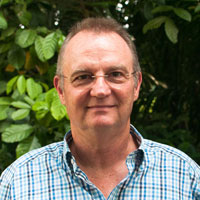There is much political will to meet ambitious goals on forest restoration – just think of the commitment and cooperation achieved in initiating the Aichi Targets, Bonn Challenge and New York Declaration on Forests. Regional initiatives such as AFR100 in Africa or the Latin American Initiative 20×20 aim to into multifunctional landscapes by 2020, reaching up to 350 million hectares globally by 2030, as the final target of the Bonn Challenge.
The numbers may be big, but their implications for the global potential for climate change mitigation are unclear. Above all, they depend on the way the multiplicity of restorative strategies are implemented, for which reason and for how long.
Many restoration initiatives tend to be area- or project-focused, while a better approach would be to implement a more comprehensive approach to forest landscape restoration which encompasses as much broader objectives increasing agricultural productivity, improving soil quality, reducing erosion, increasing the efficiency of livestock practices, enhancing biodiversity conservation, improving water quality and management, and developing income opportunities and livelihood options, together with the goal of climate change mitigation. The question of how to prioritize these options based on multiple criteria, as well as identifying policy and institutional constraints to this end, warrants investigation in order to design and implement cost effective, equitable and environmentally sound forest landscape restoration projects.
For climate change mitigation, forest landscape restoration is also just one among many possible management alternatives, but it is one that is thought to have large carbon sink potentials. Protecting existing forests, while restoring some, will keep a large and growing reservoir of aboveground and belowground carbon, while additionally sequestering atmospheric carbon.
Many nations have prioritized forest landscape restoration through the Bonn Challenge and in their nationally determined contributions (NDCs) to the Paris Agreement, with the aim of keeping global warming below 2°C or even 1.5°C. Forest conservation and forest expansion (natural or assisted) are considered effective low-cost mechanisms for carbon sequestration, particularly in tropical regions. However, current estimates on carbon sink potential in the tropics are uncertain (around 3-5 petagrams of carbon for 2014-2050) and the institutional, political and social settings that promote effective restoration are yet unclear.
As the global restoration agenda gains momentum better data on the potential of forest landscape restoration to achieve the social, economic and environmental objectives need to be placed in the hands of policymakers and practitioners for effective and efficient decision-making. There is also a need to systematically identify knowledge gaps to prioritize new research.
One current project, conducted by a consortium involving the Center for International Forestry Research (CIFOR), the International Center for Tropical Agriculture (CIAT) and Wageningen University & Research, focuses on Central and South America, attempts providing this information, and includes four lines of research:
1. Identifying sectorial, institutional and policy dimensions hampering restoration outcomes: Restoration requires appropriate financial and institutional conditions. The rising interest in scaling up restoration at the country level calls for a coordinated policy framework which is gradually evolving. However, more often than not national restoration plans and strategies are not developed with a cross-sectorial, holistic vision.
Detailed evaluations on how legal and policy frameworks either hinder or promote forest landscape restoration at the country and regional levels are needed for effective implementation. A comparative analysis is underway of the legal and policy frameworks, national plans and instruments dealing with restoration and reforestation, including natural regeneration as a potentially cost-effective approach.
2. Understanding the scope of ongoing and pledged restoration activities: One important objective is to understand the enabling factors for successful restoration outcomes, in both environmental and social terms, in subnational initiatives and projects. Work is ongoing to record and map the proposed restoration initiatives in Latin America. The resulting map and database can provide a basis for analyzing potential for environmental improvement, by overlaying initiatives and projects with areas of land degradation, deforestation and biomass. Available social data can also be used to assess the potential for social impact.
3. Developing restoration scenarios for effective carbon sinks: Research is ongoing into the carbon sink potential of forest landscape restoration by contemplating: (i) natural regeneration, or passive restoration; (ii) assisted regeneration through tree-planting for production and/or conservation; and (iii) restoration of high-carbon ecosystems, such as wetlands and peatlands.
This will enable the creation of a a suitability map and a quantitative assessment of potential biophysical sinks, considering differences in climatic zones (e.g. humid vs. dry) and key threats to forest permanence (e.g. grazing and fires) for 2030. This map will be combined with information on restoration initiatives to define their plausible sink potentials in 2030.
4. Identifying cost-effective tools for decision-making and approaches for forest landscape restoration: We lack a clear understanding of how forest landscape restoration improves the ‘functionality’ of ecosystems and landscapes, and how these improvements benefit different stakeholders. Changes in restored ecosystems depend on many factors, including prior land-use type, extent of degradation, and the restoration approach used.Ecosystem goods and services generated at different stages of forest restoration also have different implications for different stakeholder groups. A state-of-the-art global review focused on existing prioritization and decision support tools for land-use planning aims to provide a framework for adapting findings to forest landscape restoration approaches.
This analytical review will inform project developers, practitioners and decision-makers how to design effective programs to compensate and incentivize farmers, landowners or jurisdictions for their engagement in restoration activities that provide multiple benefits (monetized and non-monetized) at different temporal and spatial scales.
The project has been advancing swiftly and CIFOR and partners will soon make available a synthesis that will summarize lessons learned, and offer ways forward to research and policy on how forest restoration is likely to succeed under given socio-ecological contexts, specific legal and governance frameworks, and particular restoration goals. It is also hoped to guide restoration project developers to optimize trade-offs and solve potential conflicts of interest.
We want you to share Forests News content, which is licensed under Creative Commons Attribution-NonCommercial-ShareAlike 4.0 International (CC BY-NC-SA 4.0). This means you are free to redistribute our material for non-commercial purposes. All we ask is that you give Forests News appropriate credit and link to the original Forests News content, indicate if changes were made, and distribute your contributions under the same Creative Commons license. You must notify Forests News if you repost, reprint or reuse our materials by contacting forestsnews@cifor-icraf.org.


























